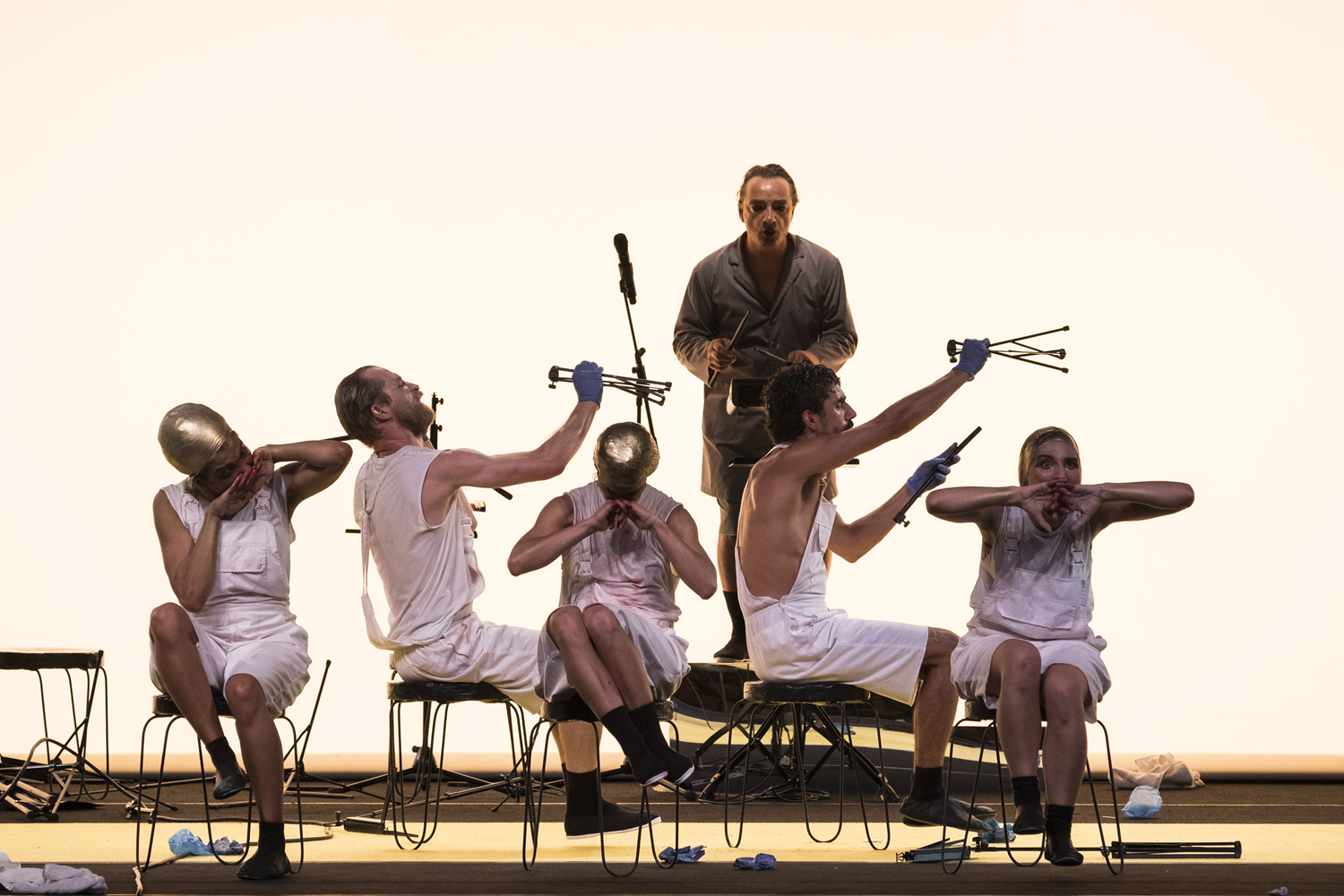
Bacchae – prelude to a purge, is an excessive performance, bringing together performers and musicians, how did you start this work?
According to Nietzsche, in The Origin of the Tragedy, Bacchae is possibly the only survivor of the ancient tragedy tradition, that indeed combined performance and music, had its roots in the Dionysian ritual, was a cathartic experience, rather than the narration of a story. And, in fact, if you read the text looking for a story to tell you will immediately be in trouble, as it is highly fragmented, illogical, chaotic, etc. Whereas if you see it from the perspective of Nietzsche it not only makes sense, as it opens broad possibilities for its staging. This is how I have started working with the idea of music as the central element, and how I came to the figure of the musician, i.e. to the chair and the music stand. Later the chair became a stool, as I systematically looked at Hellenistic iconography (reliefs, vases, etc.). As I worked in the studio with these elements, I realized how highly anthropomorphic a music stand could be, enabling situations of dismemberment and metamorphosis, aspects that play a main role in this play of Euripides. This object, with its foldable different parts, became central in the creation of our Bacchae.
Your works have a sustained rhythmical foundation. You construct very specific figures on stage through rhythmical movement, facial expressions, the use of costumes and colors, often in close relation and connection to objects that take an integral place in your performances and often almost become alive. Would you like to speak about this special and very recognizable universe of yours, its background and where you take your inspiration from?
On one hand, I believe that each and every aspect of a show is important: music, set, costumes, make-up, choreography, performer, sound, etc., just as a narrative is composed by words, images, punctuations, etc. You cannot take away a little word, or a comma, of a poem without damaging it. On the other hand, equally important are detail and rhythm. The former, guiding the performer along the creation process, and performer and public along shows. Details are very tiny words with which we write our language, the choreography. The later, allowing a more emotional relation between public, performer and piece.
What is your relation to fiction, narration and the absurd?
Our Bacchae was crafted in a close relation with the play of Euripides. Likely the audience will see figures in transformation, images arousing other images, sensations, the unpredictable, situations unfolding… in a way that relating to the “resolution ex-machina”. The guiding line is this, not Euripides’s narrative, as already indicated there is not really one. Thus, the elements of our piece are rhythmically arranged, composed, instead of in arranged to “make sense”. Rhythm is therefore an alternative to sense. This is what I call “fiction”. It is not simply a matter of “my relation”, my own choice, but of exploring the deeper sense of Euripides and Greek tragic culture – I think.